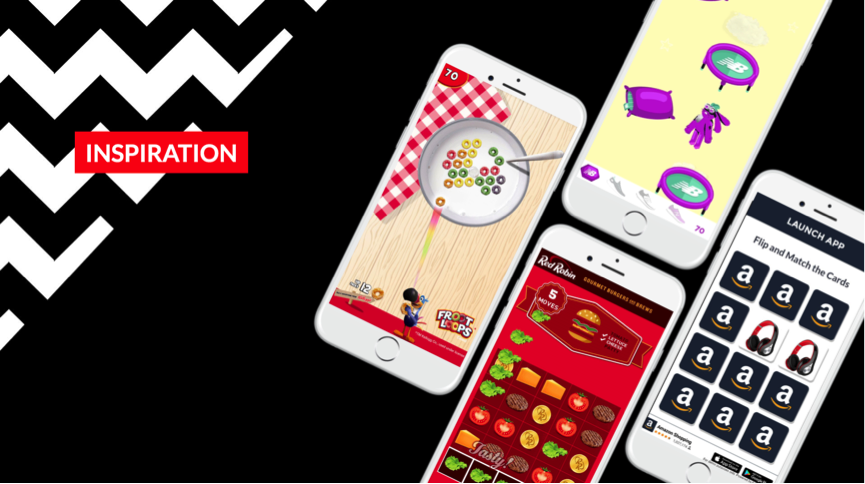What differentiates a great conference from a good conference? When looking at the more successful events and organisers, data fluency, visual literacy and social media management applied to marketing and communications strategies tend to contribute to standout success. Yes, we should expect great speakers, relevant content, a great location, lots of like-minded attendees- but its all about the customer experience and context in this digital era of information overload.
Taking a data driven approach is key to unlocking new customers and is essential to running any successful event. With their high expectations for a personalised service, consumers prefer to engage with a brand that can deliver across many variables and channels- best price, best content, best web & mobile interaction. This has been a major catalyst for digital business transformation. If a company does not deliver to their expectations, they will simply look at a number of other competitors.
Big data offers events organisers the chance to learn more than has ever been possible about what their customers want. The critical aspect of all this valuable insight is in the contextual dissemination of information, both within an organisation and externally with attendees- above all, it has to be relevant. There is often a huge disconnect between the amount of data collected by organisations and their ability to make use of it. Visualising and presenting this data in the right way bridges this gap.
Event planners are increasingly harnessing data driven communications as a way of enhancing their events, boosting attendee numbers, growing loyal communities and ultimately providing a greater experience over the longer term. Using the language of data, visual communications provides a layer to help organisations explore and exchange ideas internally, whilst engaging with their customers across many channels in a meaningful, insightful and impactful way.
Web Summit’s data driven approach to event planning
Data driven communications have a crucial role to play in the success of big business events like WebSummit
Technology conference Web Summit is a great example of an event that has used a data driven approach to its advantage. The annual event, based in Dublin, has grown from 400 to over 22,000 attendees, from more than 100 countries, in just four years and has been described by Forbes as ‘the best technology conference on the planet.’
What does Web Summit owe its success to? Well the use of data has definitely been critical to their strategy.
Put it this way: While conference companies typically hire experienced event planners, we hire computational physicists, applied statisticians, engineers of all shapes and sizes, some folks who know a thing or two about machine learning and AI, and then some awesome front end developers.
– Paddy Cosgrave, one of the founders of WebSummit
While traditional conference companies fret over manually curating seating plans, compiling speaker lists and handpicking invites for networking events, we approach the challenge from a technical and mathematical point of view. We build algorithms that take into account who you are and who you might benefit from being on a pub crawl with or at a table with or in a meeting with.
The team at WebSummit were able to“engineer serendipity” at the scale of over 20,000 attendees. This level of detail provided by a data driven approach ensured that the people at your table were neither a random collection of attendees nor a manually curated group of attendees, but a product of algorithms.”
What to do with all the data?
So you’ve acquired the data, you’ve refined it and mined it. It’s now important to filter and present information in a meaningful and contextual manner, so that your audience to interact with it. Visual content can be presented through a number of different mediums to build successful relationships with the intended audience.
Here we’ll take a look at some of the types of visual communications utilised by the events industry.
Event apps
Event apps have also become extremely popular over the last couple of years, with many organisers using them as a way to collect data about attendees and improve their networking facilities. The great thing about event apps is that they serve a purpose throughout the lifetime of an event and cover all touch points. Even after an event has taken place they continue to create a buzz.
For Web Summit, a mobile networking app was designed and developed for the conference. The app is designed to scan attendee and exhibitor profiles and suggest potential connections. It also comes with a chat features so that attendees can contact each other directly.
The idea is that by using data collected from attendees, the event planners can take some of the randomness out of networking and actually help attendees to meet the right people i.e. valuable connections.
The event app wasn’t just useful during the event but afterwards too. The company said that the app and algorithms would continue to learn more about users’ interests and collect relevant data, so they could target both exhibitors and attendees with follow-up emails and notifications suggesting people they might want to connect with after the event.
Le Web’s innovative use of event apps and data
Another extremely successful European annual event is LeWeb. Internationally renown for digital innovation, it attracts the best start-ups, tech companies, investors and leading media from around the world. Similar to Web Summit, they also provide a mobile app for data collection and networking purposes. The Le Web’s data driven approach to their mobile app allows users to check out the full list of attendees, view the programme, personalise their agendas and network onsite using iBeacons, a protocol standardised by Apple in 2013. iBeacons allow two-way communication between the beacons ( transmitters) and the smart phone app, so it allows for more complex forms of messaging, interactivity and functionality. Users can also integrate the app with their LinkedIn accounts to view attendees from their network.

They were also very innovative through the release of their adopt an entrepreneur contest which allowed the creators of the best and most shared projects to win an entry ticket to LeWeb. One of the entries was a project, created by Benjamin Blonde, which visualised data gathered from LeWeb’s website.
Social media dashboards
Today an event seems incomplete without a social media dashboard. Social media dashboards provide a powerful way for event planners to visualise and promote data collected from social media sites such as Facebook, Instagram and Twitter at their events or conferences. More importantly it’s a medium through which they can interact and engage with their audience.
Real-time dashboards are fantastic for showcasing social conversations around an event and can be displayed as a live wall at events. Many event planners see them as a ‘social hub’ and the perfect backdrop for the sessions taking place during an event.
The idea is that social media dashboards draw analytics from interactions tracked across specific handles or hash tags on a social media site. It not only adds a social element to the event but also allows event organisers to analyse the conversation during and after an event, so they can get a better insight into attendees’ experiences.
The data collected allows them to establish what worked, what could be improved, which speaker / activity generated the most buzz and much, much more.

Interactive content
Interactive content provides marketers a way to amplify their event activity and engage with attendees before, during and after an event, enabling them to quantify impact in real terms. Formats such as questionnaires, polls, assessments, photo galleries, and ROI calculators engage with the audience prospects on their terms. All the while, they capture valuable data for the marketing team – a win-win for the event planners and the audience.
Here at team VISU.AL we’ve created a number of interactive widgets for our clients, taking data gathered, visualising it in the relevant manner and allowing customers to interact with that data, leading to further business being generated.
There are also platforms like SnapApp, allowing organisations to harness the power of interactive content and boost demand generation for events .

Static, interactive and animated infographics
Visual content, by way of static, interactive and animated infographics ( motion graphics) can be utilised by organisers prior, during and after an event to create and maintain interest, awareness and credibility. Highly sharable across social media and blogs, they are great for extending the lifetime value of an event and keeping the buzz going through social sharing.
Image source: WebSummit
All sorts of useful and valuable data can be shared for events, such as information about attendee demographics or and business that was done as a result of the event. This information can then be used by marketers to tell everyone just how great their event is, helping to grow attendee and exhibitor numbers for future events.
Static infographics can also be used internally to present data in an easy and simple way for team members to digest. For example, organisers may want to collect data on the most visited exhibitor stands or the most popular speaker and share it in a static infographic so everyone is aware of the things that worked and the things that didn’t at an event. Collecting and presenting this data visually allows organisers to make positive changes that enhance attendees’ experience at future events and generate a higher ROI.
Motion graphics are a very powerful way to visually communicate data. For the 99U conference hosted by Behance, a motion graphic of inspirational quotes taken from speakers at the event was played in a loop throughout the event. The flexibility a motion graphic affords means you can apply it to many different scenarios. For brand awareness, motion graphic videos can take you anywhere and let you do anything without the costs of actors, locations, and camera equipment.
Adopting a visual communications strategy
By integrating and utilising the elements featured above, event planners can build up an effective data driven visual communications strategy that maximises the success of their events. Collecting, analysing and visualising data is not only beneficial for marketing events to attendees, speakers, exhibitors, investors and the media but can also be extremely useful during the planning stages and long after.
If you are interested in data driven visual communications using social media dashboards, static infographics and interactive content for your event, please get in touch with the VISU.AL team. We have years of experience in helping leading organisations make the best visual use of their data. Check out our portfolio or give us a call on 0207 618 6101 to get started.










